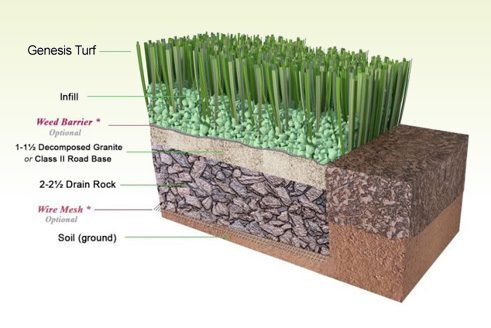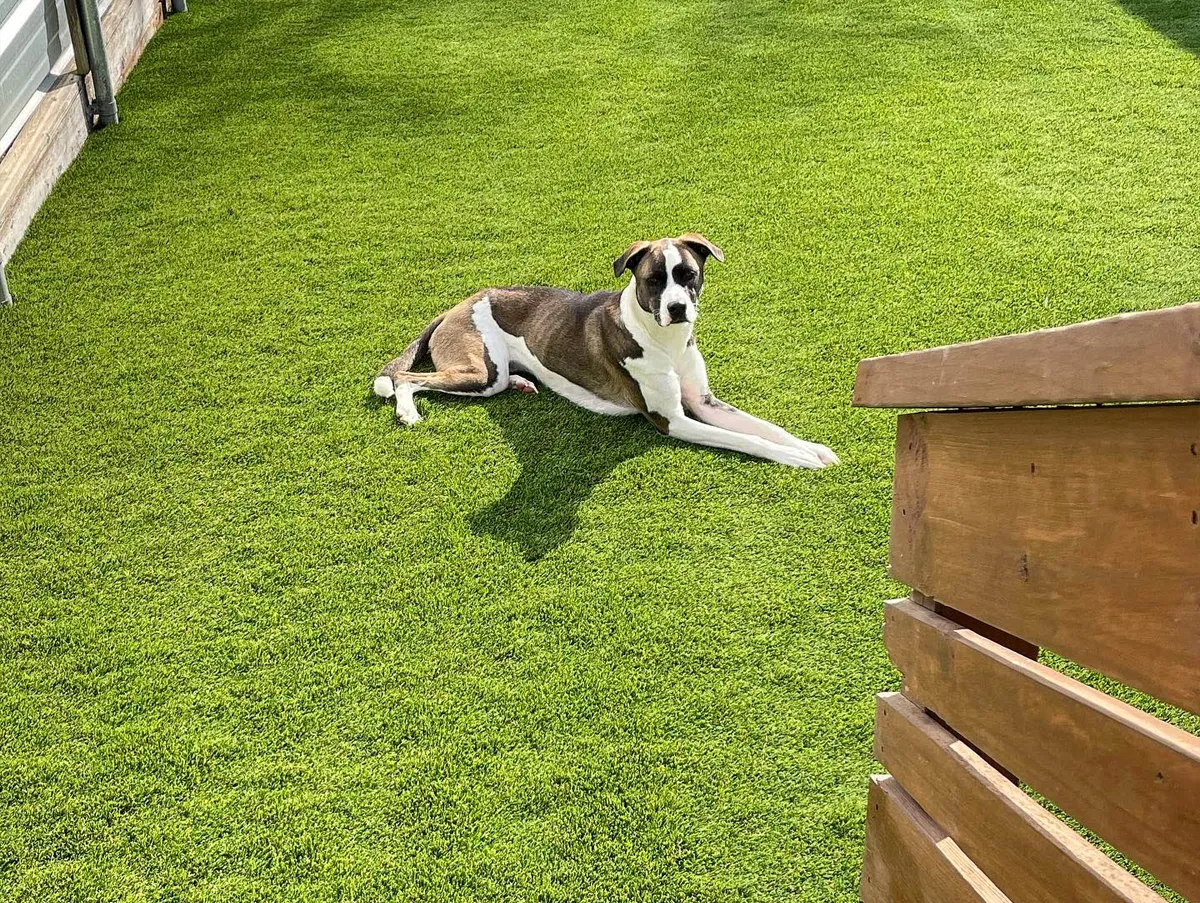Tailored Turf Installation Phoenix AZ for Residences, Businesses, and Play Areas
Tailored Turf Installation Phoenix AZ for Residences, Businesses, and Play Areas
Blog Article
See Why Homeowners Prefer Artificial Turf for Lasting Landscape Design Practices
As home owners progressively prioritize sustainability in landscaping, synthetic grass has actually become a compelling choice to traditional grass. Its capability to conserve water, decrease upkeep efforts, and reduce environmental impact positions it as a sensible choice for those looking for eco-friendly solutions. Moreover, the visual appeal and flexibility of man-made lawn accommodate varied design choices. Nevertheless, the ramifications of this change prolong beyond simple benefit and looks, prompting a more detailed exam of exactly how these options influence more comprehensive ecological outcomes. What remains to be discovered is the complete range of advantages that fabricated turf can use to home owners and the atmosphere alike.
Water Preservation Perks
Among one of the most substantial benefits of synthetic grass is its duty in water conservation. Conventional lawn yards need considerable amounts of water to preserve their lavish appearance, commonly leading to overuse of local water resources, particularly in deserts. On the other hand, synthetic grass removes this demand totally, as it does not need watering. This not only conserves water yet likewise decreases the strain on municipal water systems, especially throughout drought problems.
In addition, the installment of synthetic grass can add to a much more lasting landscape. Property owners can dramatically reduce their water bills, enabling reallocation of resources to various other ecological campaigns or home uses. Furthermore, man-made grass is developed to stand up to numerous climatic problems without the need for additional watering, making it an excellent selection for regions encountering water scarcity.
The ecological benefits extend past instant water cost savings. By minimizing water consumption, fabricated turf helps to mitigate the effects of environment change, protecting crucial ecosystems that are threatened by excessive water removal. As sustainable landscape design practices acquire traction, man-made lawn emerges as an accountable choice for property owners looking for to create eco-friendly exterior rooms.
Reduced Maintenance Initiatives
Synthetic grass considerably reduces upkeep efforts contrasted to conventional grass yards. With synthetic yard, home owners can get rid of the time-consuming tasks related to natural landscape design, such as mowing, feeding, and weeding. This not just conserves important time yet additionally decreases physical labor, making lawn care easily accessible for individuals of every ages.
One of the most noteworthy benefits is the absence of regular mowing. Standard yards need constant trimming to preserve an aesthetically pleasing elevation, whereas synthetic grass continues to be consistently lush without the requirement for cutting. Additionally, property owners no longer require to apply fertilizers or pesticides, which are commonly called for to keep all-natural turf healthy and balanced. This shift not just lightens the work but additionally promotes a neater, much more uniform appearance year-round.
Furthermore, synthetic grass is resilient and long lasting, calling for minimal upkeep beyond periodic cleaning and washing to get rid of debris. This convenience of maintenance enables home owners to enjoy their outdoor spaces without the constant fear of maintenance, supplying even more time for leisure and family tasks. Inevitably, the minimized upkeep initiatives browse around these guys associated with synthetic grass make it an appealing option for those seeking a low-maintenance, visually appealing landscape.

Environmental Influence Reduction
There is a growing recognition of the environmental advantages connected with fabricated grass, especially in regards to water preservation and minimized chemical use. Traditional lawns require significant amounts of water, especially in drought-prone areas, bring about enhanced pressure on neighborhood water sources. On the other hand, fabricated grass eliminates the demand for watering, drastically reducing water usage and promoting sustainability.
In addition, standard lawn maintenance commonly includes the application of fertilizers, herbicides, and pesticides, which can add to dirt and water air pollution. Artificial grass mitigates this ecological danger by requiring minimal upkeep and basically getting rid of the demand for harmful chemicals. This not only improves soil wellness yet likewise secures local communities from toxic drainage.
Moreover, the manufacturing of all-natural lawn lawns usually involves making use of fossil fuels for trimming and landscaping tools, more adding to greenhouse gas emissions. By choosing synthetic turf, home owners can substantially reduce their carbon impact related to yard treatment tasks.
Visual Appeal and Flexibility
In addition to its environmental advantages, synthetic grass supplies considerable visual allure and flexibility for landscape design. House owners can accomplish a lavish, eco-friendly look year-round, removing the seasonal variations commonly associated with natural yard. This constant visual not only improves the aesthetic appeal of a property yet also adds to a well-kept and sleek look.
Furthermore, synthetic lawn is offered in a range of styles, shades, and textures, permitting modification to match private choices and style themes - Arizona turf. Whether made use of in property yards, commercial areas, or recreational locations, it can flawlessly incorporate right into varied landscaping styles, from modern-day minimalist to lush exotic setups
The flexibility of synthetic grass prolongs beyond simple look; it can be mounted in various areas, consisting of rooftops, patio areas, and even interior areas, developing opportunities for unique landscape design options. Furthermore, it appropriates for a series of activities, from kids's play areas to pet-friendly environments, offering functionality without endangering design.
Ultimately, the aesthetic allure and adaptability of synthetic grass make it an attractive option for house owners looking for lasting landscaping options that do not compromise charm for Web Site environmental duty.

Long-Term Cost Financial Savings
One of the most engaging benefits of fabricated grass is its capacity for long-lasting cost financial savings. Unlike natural turf, which needs normal upkeep-- including mowing, watering, feeding, and insect control-- man-made lawn dramatically lowers these continuous expenses.
Additionally, synthetic grass has a lifespan of 15 to 25 years, relying on its quality and usage. This durability reduces replacement expenses, making it a more cost-effective selection in the long run. The preliminary financial investment in synthetic lawn can typically be recouped through the savings accrued over time.
While the upfront price might appear higher contrasted to turf installment, the collective financial savings from decreased maintenance and water usage often outweigh these first expenses. Ultimately, look at this website the adoption of synthetic grass not only promotes a lasting landscaping service however additionally uses home owners a monetarily smart option that straightens with lasting budgeting goals.
Verdict
Synthetic grass emerges as an engaging choice for lasting landscaping, using substantial advantages in water preservation, minimized upkeep initiatives, and reduced ecological influence. As areas increasingly focus on ecologically pleasant techniques, the adoption of artificial lawn stands for a dynamic action towards achieving resistant and sustainable landscapes.
Furthermore, synthetic turf is created to withstand various weather conditions without the need for supplementary watering, making it an excellent selection for areas encountering water shortage. (Arizona turf)

Artificial lawn arises as an engaging option for lasting landscape design, using considerable advantages in water preservation, minimized maintenance initiatives, and decreased environmental effect.
Report this page